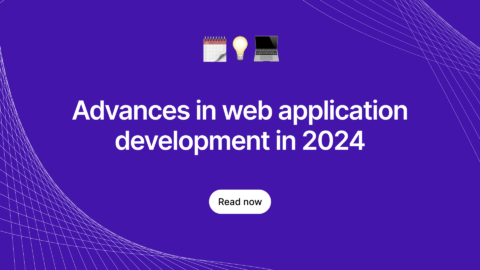Web development is currently one of the fastest growing areas of programming. Today, having a
website is as important as having a physical address for a business, so this is an area that is
constantly expanding. Web development is divided into three categories: front-end, back-end, and
full stack. In the world of technology, a “full stack” refers to the entire collection of software and
hardware tools used to implement a specific application platform and includes components like the
operating system, databases and more. In other words, full-stack development is the creation of
both front-end (client-side) and back-end (server-side) web application components.
Front-End
Front-End is the showcase of any web. The page’s aesthetic appeal and user-friendliness are its
prime accountabilities. Front-end languages include HTML, CSS, and JavaScript. Several frameworks are used to facilitate development and leave the site much more polished and finished. React, Polymer.js, vue.js, jQuery,
Ember.js, Backbone.js, Semantic UI, Svelte, Foundation, Bootstrap, Preact, Meteor, Mithril JS,
Alpine.js, and Ruby on Rails are a few examples. Among these examples, React.js is the most popular
front-end development framework.
Frameworks
A rich user experience can be created by using front-end frameworks when creating applications.
Front-end developers use HTML for basic web layout, CSS for visual formatting and JavaScript for
user interaction to convert data into a graphical interface.
These frameworks combine pre-written code and interface blocks to create long-lasting user
interfaces and web applications. Front-end technologies aid in the development of appealing
websites and applications by providing a variety of built-in features and drag-and-drop elements.
Back-End
The administrative portion of any website is referred to as “back-end.” It will be in charge of dealing
with databases, HTTP requests, the login system, and ensuring persistence and data integrity.
Several languages can be used on the back end. You can programme in C#, Java, Python, and
JavaScript. Django, Node.js, Laravel, Spring, and.NET are well-known frameworks for developing
website backends.
JavaScript technology
The concept of full-stack development has matured thanks to the power of JavaScript technology.
Numerous JavaScript platforms for front-end and back-end development have emerged in the
market. The capabilities of JavaScript technology have enabled developers to work on both front-
end and back-end web development domains; otherwise, they have completely isolated domains.
JavaScript will remain a major trend for full-stack web development.
Popular full-stack developers using JavaScript technology include MEAN stack development. Thus,
MEAN stack development is gaining popularity.
Artificial Intelligence (AI)
AI is already a necessity for companies in all niches. The more this area evolves, the better and more
independent the systems become. Systems with implementations of AI bring more profits and
greater control over processes. All businesses must fully integrate AI into their full-stack evolution.
Artificial intelligence has become an integral part of all kinds of professional quality web
development. It has a very powerful role in the development of chatbots, which have revolutionised
the field of customer support. A powerful chatbot is able to respond to customer queries via text
and even voice. This will continue to be a major trend in web development, especially in retail, SaaS,
e-commerce and other areas. The chatbot is expected to handle more than 85% of total customer
support interactions by next year, saving more than half of customer support costs.
Full-Stack Internet of Things (IOT)
This concept of smart and connected devices was a novelty back then, today it is already a reality.
According to a recent global study, 130 new devices are connected to the internet every second.
Therefore, experts in the field have entitled the IOTs as the industrial revolution 4.0. A fully
integrated, and in some cases rigidly engineered, “stack” of business functionality is the foundation
of The Full Stacks’ vision and future-state business model. These are comprehensive, self-sufficient
networks of commercial or practical abilities (like fleet management, supply chain control, flow
optimization, predictive maintenance, etc.).
Full-Stack Progressive Web Applications
Progressive Web Applications, or PWA, is a new trend in the development of lightweight, efficient,
mobile-friendly and interactive web pages. These types of applications work simultaneously as a
native mobile application and a web application. They can be used both offline and over low-quality
connections. These applications automatically adjust in browsers without any delay or problems.
They can make use of push notifications and be updated automatically.
Wrapping up
Agira stands as one of the leaders in full stack development. We hope you find the information
provided in this blog be useful and illuminating. Please feel free to contact Agira if you have any
inquiries about creating a modern full-stack development for your company.










